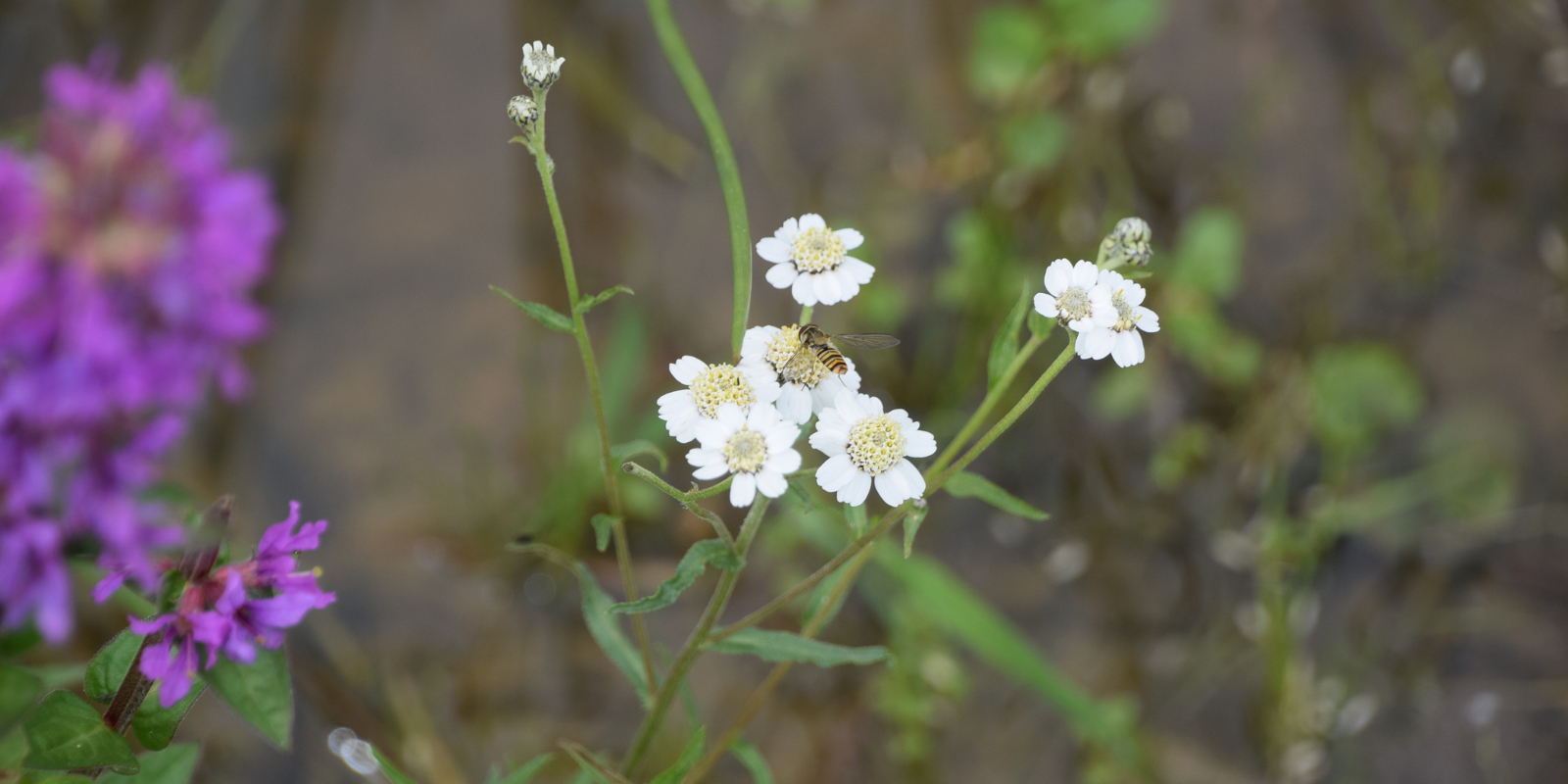Glorious, colourful wildflower meadows, alive with the buzzing of bees and the flutter of butterflies, are an iconic part of our landscape here in the UK. Wildflower meadows are hugely important as they support many flowers, insects, and other animals.
These incredibly diverse habitats are a vital part of our ecosystems. When wildflower meadows vanish, so do pollinators and other insects, and in turn the animals that eat these insects, such as birds, hedgehogs and bats. We have lost 97% of our wildflower meadows since the 1930s, but here at The Future Forest Company, we are working hard to reverse that trend.

Why do we need to plant wildflowers?
Wildflowers and wildflower-rich habitats are an oasis for nature, providing essential food sources for some of our favourite insects, such as bumblebees and butterflies. That is just one of the many reasons why wildflower planting is so important.
-
Pollinators such as bees, butterflies, moths, flies and wasps all rely on wildflowers as a vital source of food, and in turn, many of our important food crops depend on insects to pollinate them. Insects that feed on wildflowers also provide a food source for other animals and help to reduce the number of pests like aphids that attack crops. The more wildflowers there are, the more diverse pollinators they can support, and the more healthy crops we can grow.
-
Wildflowers protect the soils they grow in. Established wildflower meadows have complex root systems which make the soil very stable and able to withstand heavy rainfall. This helps by holding onto rainwater, stopping nutrients from washing away and mitigating flood risk.
-
Healthy, undisturbed wildflower meadows store significant amounts of carbon in their soils.
-
Wildflower meadows are good for our mental health. Spending time in beautiful, natural surroundings is a proven antidote to the stresses of modern life.

Restoring wildflower meadows
Changes in land use and farming practices, as well as the expansion of our cities, towns and villages, have all contributed to the disappearance of wildflower meadows. The scattered meadows that remain are at risk through neglect and inappropriate management. We want to change that.
Several of our sites currently have degraded meadows, or the potential to see new meadows created for the future. All our wildflower planting projects are carried out using our low-key best practice methods, and are managed by our own in-house ecologist and agriculture specialists.
New meadows are created using native seed and reintroducing the right management to them, such as hay-cutting and light grazing. We only use native wildflower seeds in our sowing activities and we only team up with local flower nurseries who can grow on our wildflower plants without using peat.
Our team carry out regular site surveys and planning to ensure we are doing things right. This includes monitoring how wildflowers, bees and butterflies are responding to our management.
Less is more
Wildflowers like untouched ‘poor’ soil. Apart from a very few inhospitable areas such as moors, bogs and beaches, most natural soils in the UK have been enhanced over the centuries. But wildflowers have very simple needs and are not equipped to deal with artificially boosted nutrient levels.
Our Head of Ecology Lindsay Mackinlay tells us that to make our soil wildflower-friendly, we use no fertilisers, and after cutting the meadows we take the cuttings off, to further reduce fertility. High levels of soil fertility enable big species like grasses to grow and take over, crowding out the wildflowers. If the soil is less traditionally fertile, it will grow a more diverse selection of wildflowers. Lindsay tells us that in a 2m x 2m square of Scottish meadow, there could be up to 35 different species of wildflower. Applying fertiliser to that patch of land would reduce the number of species to nearer five.
Join us on our mission to plant wildflowers and restore the UK’s wildflower meadows by taking out a Wildflower Meadow Planting Sponsorship today!
